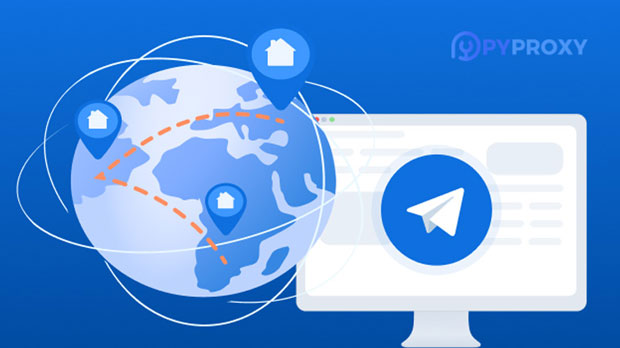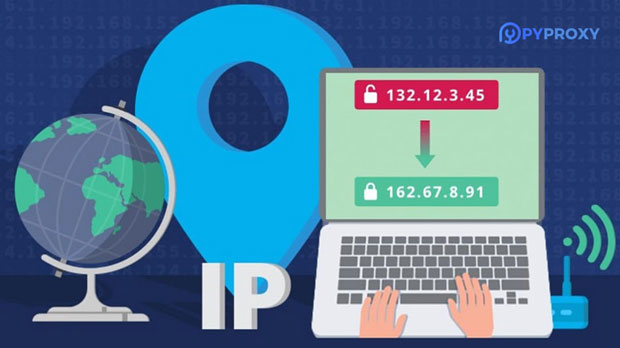A dedicated socks5 proxy is a specialized type of internet proxy that provides users with a unique IP address for their exclusive use. It allows for enhanced privacy, security, and greater control over online activities. Unlike shared proxies, which are used by multiple individuals at once, dedicated socks5 proxies are allocated solely to one user, offering faster speeds, more stable connections, and a higher level of anonymity. This article will explore the differences between dedicated SOCKS5 proxies and shared proxies, outlining their unique features, advantages, and potential use cases, providing a comprehensive understanding of why and when to choose one over the other. Understanding SOCKS5 Proxy: The BasicsSOCKS5 is a protocol used to route internet traffic through a proxy server. This protocol is designed to support a wide range of internet protocols and provides several features such as encryption, IP address masking, and the ability to bypass geographic restrictions. SOCKS5 proxies are commonly used for tasks that require privacy, such as anonymous browsing, avoiding geo-blocking, or accessing restricted content.The key distinction between SOCKS5 and other proxy types, such as HTTP or HTTPS proxies, is that SOCKS5 operates at a lower level in the networking stack, allowing it to handle virtually any kind of internet traffic—whether it’s HTTP, FTP, or peer-to-peer connections. This makes SOCKS5 more versatile and ideal for users seeking a reliable, all-encompassing proxy solution.Dedicated SOCKS5 Proxy: What Makes It Special?A dedicated SOCKS5 proxy provides an individual user with exclusive use of a specific IP address. This means that only one person can access the proxy server with that IP at any given time, ensuring that all data and traffic routed through that proxy belong solely to the user.The benefits of using a dedicated SOCKS5 proxy include:1. Increased Privacy: Since the IP address is not shared with others, there is a significantly reduced risk of being flagged for suspicious activities. Users can avoid the potential privacy risks associated with shared IP addresses, such as IP reputation issues or detection of suspicious patterns of behavior.2. Improved Speed and Stability: As the proxy server is dedicated to a single user, there is less strain on the resources, resulting in faster speeds and more stable connections. Dedicated proxies do not experience the slowdown that often comes with shared proxies, which can become congested when too many users access them simultaneously.3. Enhanced Control: With a dedicated proxy, users have more control over their internet traffic. They can configure their proxy settings according to specific needs, such as geo-spoofing, managing access to specific services, or automating online tasks. Additionally, dedicated proxies allow for the setup of secure connections for sensitive activities.4. Better Anonymity: Since no one else shares the same IP address, it’s more difficult for websites to detect or track your online activity. This is particularly important for users who value anonymity and wish to maintain a low profile while browsing the internet.Shared SOCKS5 Proxy: A Broader ApproachA shared SOCKS5 proxy, as the name implies, is used by multiple people at the same time. Several users share the same IP address when accessing the internet through the proxy server. While shared proxies are generally more affordable, they come with several potential drawbacks.1. Reduced Speed and Performance: Because multiple users are accessing the proxy server simultaneously, the available bandwidth is divided among them. This often results in slower speeds and reduced performance, especially during peak usage times.2. Less Privacy: Sharing an IP address with others increases the risk of being linked to undesirable or suspicious activities. If another user engages in malicious behavior, the shared IP could be flagged, potentially affecting everyone using that proxy.3. Increased Risk of Detection: Shared proxies are more easily detectable by websites and services that monitor IP addresses for unusual or suspicious behavior. If several users are engaging in activities such as automated scraping or accessing a specific site in bulk, the IP address may get blocked, affecting all users sharing it.Despite these drawbacks, shared proxies can still be useful for individuals with basic needs, such as casual browsing, unblocking websites, or testing simple applications. They offer a low-cost solution for non-sensitive tasks but are not ideal for those requiring high privacy or security.Comparing Dedicated and Shared SOCKS5 ProxiesWhen deciding between a dedicated or shared SOCKS5 proxy, several key factors come into play. Here’s a detailed comparison of the two:1. Cost: Shared proxies are generally more affordable than dedicated proxies. However, the cost comes at the expense of performance, privacy, and security. A dedicated SOCKS5 proxy, while more expensive, provides significant benefits in terms of speed, anonymity, and reliability.2. Performance: Dedicated SOCKS5 proxies offer superior performance compared to shared proxies. With exclusive access to an IP address, users experience faster speeds and more stable connections. Shared proxies, on the other hand, can become sluggish during peak times when multiple users are connected simultaneously.3. Privacy and Security: Dedicated proxies provide enhanced privacy because they are not shared with others, reducing the likelihood of detection or unwanted surveillance. Shared proxies, by their nature, expose users to greater risks, including the possibility of sharing an IP address with individuals engaging in malicious activities.4. Anonymity: A dedicated SOCKS5 proxy guarantees higher levels of anonymity. Shared proxies, especially those used for certain high-risk activities, may face scrutiny from websites or service providers that monitor shared IP addresses for suspicious behavior. This could compromise user anonymity.5. Use Case: Dedicated proxies are ideal for users with specific, privacy-sensitive needs such as secure browsing, accessing restricted content, or performing automated tasks. Shared proxies, however, may suffice for more basic applications, such as accessing geo-restricted content or general web browsing.When to Choose a Dedicated SOCKS5 Proxy?While shared proxies may be suitable for general, low-risk activities, dedicated SOCKS5 proxies are better suited for users who require optimal performance, security, and anonymity. Some common use cases for dedicated SOCKS5 proxies include:1. Business or Enterprise Use: Companies that require a high level of security for accessing internal resources, managing large-scale data, or automating tasks often prefer dedicated proxies to ensure their online activities are secure and private.2. Privacy-Conscious Individuals: For individuals concerned with anonymity or online privacy—such as those accessing sensitive accounts, performing secure transactions, or bypassing surveillance—a dedicated proxy offers a higher level of protection.3. Content Creators and Marketers: Those involved in activities like web scraping, automation, or managing multiple social media accounts often rely on dedicated proxies to avoid detection, maintain account security, and ensure seamless operations.4. Frequent Travelers: For users who frequently travel and need consistent, secure access to home-based content or services, a dedicated SOCKS5 proxy ensures that their connection remains stable, private, and fast.ConclusionBoth dedicated and shared SOCKS5 proxies have their place in the world of internet security and privacy. While shared proxies are more affordable and may be suitable for casual browsing or non-sensitive tasks, dedicated SOCKS5 proxies offer enhanced privacy, speed, and reliability, making them the go-to solution for individuals and businesses with higher demands for online security and performance. Understanding the differences between these two options can help you make a more informed decision about which proxy solution best fits your needs.
Jan 03, 2025
![arrow]()



















































